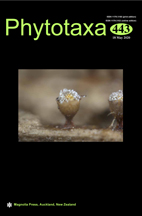Abstract
The growing interest to the ancient South American pseudocereal crop quinoa, Chenopodium quinoa Willdenow (1798: 1301), not only stimulated research on this species and its wild relatives (see Jellen et al. 2011, FAO & CIRAD 2015, Maughan et al. 2019, and references therein), but also spurred taxonomic and nomenclatural studies of these taxa, including issues of typification and/or conservation of their names (e.g., Lack & Fuentes 2013, Mosyakin & Walter 2018). The closest relatives of Chenopodium quinoa are grouped together with that species in a tetraploid (2n = 36) species complex containing such taxa as C. berlandieri Moquin-Tandon (1840: 23) sensu lato, and C. hircinum Schrader (1833: 2). Despite the growing attention to the crop and its relatives, the infraspecific taxonomy of C. quinoa remains problematic. A critical revision and proper typification of all available valid names published in that economically important group should be made to ensure the correct application of these names. The name C. hircinum was recently lectotypified by Mosyakin & Sokolova (2020), based on the specimen from LE (barcode LE00011694). However, some other names linked with C. quinoa and C. hircinum, in particular C. bonariense Tenore (1833: 13) and two varieties validated under C. hircinum by Aellen (1929), have not been typified yet and are investigated here as part of ongoing studies on the genus.


